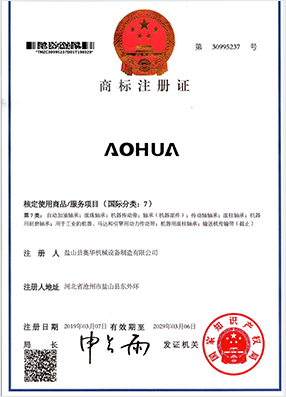 Afrikaans
Afrikaans  Albanian
Albanian  Amharic
Amharic  Arabic
Arabic  Armenian
Armenian  Azerbaijani
Azerbaijani  Basque
Basque  Belarusian
Belarusian  Bengali
Bengali  Bosnian
Bosnian  Bulgarian
Bulgarian  Catalan
Catalan  Cebuano
Cebuano  Corsican
Corsican  Croatian
Croatian  Czech
Czech  Danish
Danish  Dutch
Dutch  English
English  Esperanto
Esperanto  Estonian
Estonian  Finnish
Finnish  French
French  Frisian
Frisian  Galician
Galician  Georgian
Georgian  German
German  Greek
Greek  Gujarati
Gujarati  Haitian Creole
Haitian Creole  hausa
hausa  hawaiian
hawaiian  Hebrew
Hebrew  Hindi
Hindi  Miao
Miao  Hungarian
Hungarian  Icelandic
Icelandic  igbo
igbo  Indonesian
Indonesian  irish
irish  Italian
Italian  Japanese
Japanese  Javanese
Javanese  Kannada
Kannada  kazakh
kazakh  Khmer
Khmer  Rwandese
Rwandese  Korean
Korean  Kurdish
Kurdish  Kyrgyz
Kyrgyz  Lao
Lao  Latin
Latin  Latvian
Latvian  Lithuanian
Lithuanian  Luxembourgish
Luxembourgish  Macedonian
Macedonian  Malgashi
Malgashi  Malay
Malay  Malayalam
Malayalam  Maltese
Maltese  Maori
Maori  Marathi
Marathi  Mongolian
Mongolian  Myanmar
Myanmar  Nepali
Nepali  Norwegian
Norwegian  Norwegian
Norwegian  Occitan
Occitan  Pashto
Pashto  Persian
Persian  Polish
Polish  Portuguese
Portuguese  Punjabi
Punjabi  Romanian
Romanian  Russian
Russian  Samoan
Samoan  Scottish Gaelic
Scottish Gaelic  Serbian
Serbian  Sesotho
Sesotho  Shona
Shona  Sindhi
Sindhi  Sinhala
Sinhala  Slovak
Slovak  Slovenian
Slovenian  Somali
Somali  Spanish
Spanish  Sundanese
Sundanese  Swahili
Swahili  Swedish
Swedish  Tagalog
Tagalog  Tajik
Tajik  Tamil
Tamil  Tatar
Tatar  Telugu
Telugu  Thai
Thai  Turkish
Turkish  Turkmen
Turkmen  Ukrainian
Ukrainian  Urdu
Urdu  Uighur
Uighur  Uzbek
Uzbek  Vietnamese
Vietnamese  Welsh
Welsh  Bantu
Bantu  Yiddish
Yiddish  Yoruba
Yoruba  Zulu
Zulu accessory drive belt tensioner
Understanding the Accessory Drive Belt Tensioner
The accessory drive belt tensioner is a crucial component of a vehicle's engine system, playing a vital role in the performance and efficiency of ancillary systems. This device is primarily responsible for maintaining the correct tension on the accessory drive belt, which powers several essential components such as the alternator, power steering pump, water pump, and air conditioning compressor. Without a properly functioning tensioner, these systems could fail, leading to decreased performance and potential vehicle damage.
How It Works
The accessory drive belt tensioner is typically a spring-loaded device that automatically adjusts itself to compensate for the wear and stretching of the belt over time. As the belt ages, it can stretch and lose its initial tension, which could cause slippage. The tensioner helps to mitigate this issue by applying consistent pressure, ensuring that the belt remains tight against the pulleys. Many modern vehicles feature an automatic tensioner, which simplifies maintenance and reduces the likelihood of human error during manual adjustments.
Signs of a Failing Tensioner
accessory drive belt tensioner

Recognizing signs of a failing accessory drive belt tensioner is crucial in preventing further complications. Common symptoms include squeaking or chirping noises coming from the engine bay, which often indicate that the belt is slipping due to inadequate tension. Additionally, if the dashboard displays warning lights for the battery or other systems powered by the drive belt, it may suggest that the tensioner isn't properly maintaining belt tension. In some cases, visible wear or damage to the tensioner itself might be observed, such as cracks or excessive play.
Maintenance and Replacement
Regular maintenance checks can prolong the life of the accessory drive belt tensioner. It’s advisable to inspect the belt and tensioner during routine oil changes or when performing other vehicle services. Replacing the accessory drive belt itself typically occurs every 60,000 to 100,000 miles, and it is wise to replace the tensioner at the same time to ensure optimal performance.
Conclusion
In summary, the accessory drive belt tensioner is an integral part of a vehicle's engine system, ensuring the seamless operation of various components. Understanding its function and recognizing the symptoms of failure can help drivers maintain their vehicles more effectively. Regular inspections and timely replacements will keep the tensioner and accessory drive belt in optimal condition, ultimately extending the lifespan of the engine and enhancing overall vehicle performance. Whether you’re a seasoned mechanic or a vehicle owner, staying informed about this critical component will save time, money, and potential headaches on the road.
-
Revolutionizing Conveyor Reliability with Advanced Rubber Lagging PulleysNewsJul.22,2025
-
Powering Precision and Durability with Expert Manufacturers of Conveyor ComponentsNewsJul.22,2025
-
Optimizing Conveyor Systems with Advanced Conveyor AccessoriesNewsJul.22,2025
-
Maximize Conveyor Efficiency with Quality Conveyor Idler PulleysNewsJul.22,2025
-
Future-Proof Your Conveyor System with High-Performance Polyurethane RollerNewsJul.22,2025
-
Driving Efficiency Forward with Quality Idlers and RollersNewsJul.22,2025





























